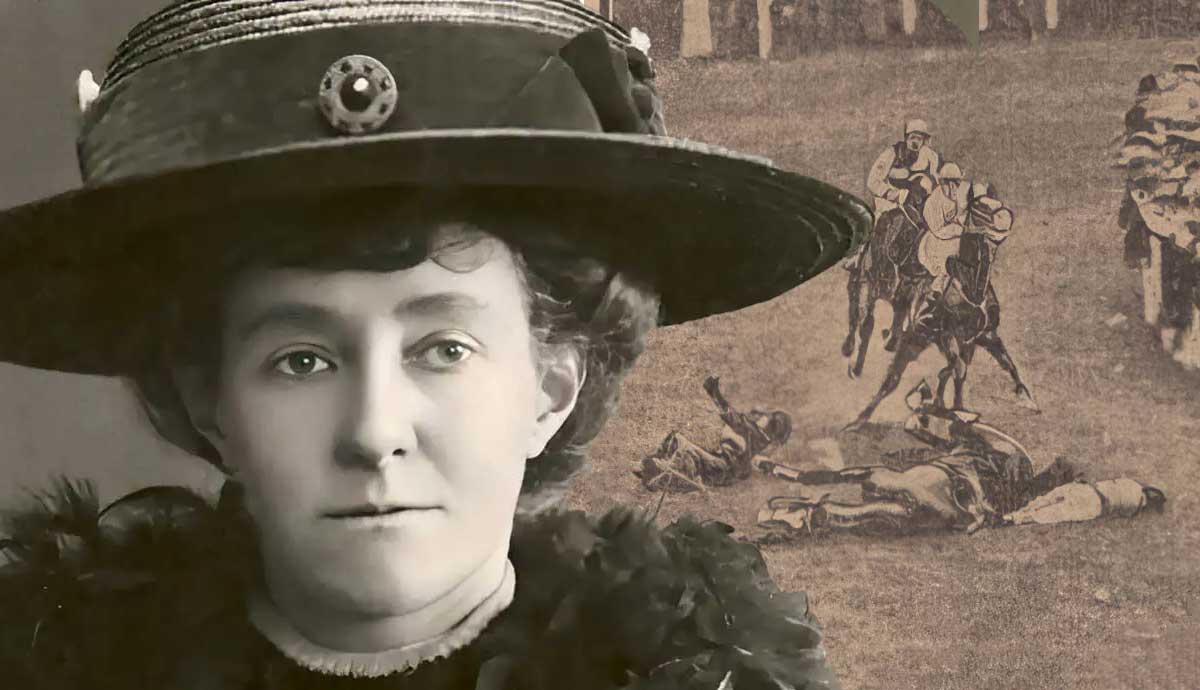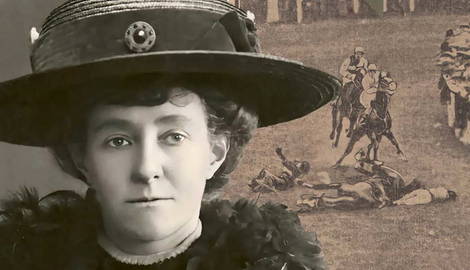
Emily Davison was an instrumental figure in the British suffragette movement, who together fought tirelessly to win women the right to vote equally alongside men. A highly educated individual who spent her early career working as a teacher, Davison was an outspoken member of the Women’s Social and Political Union (WSPU), which became known as the suffragettes, and she made a series of bold, risky and life-threatening protests which garnered media attention. Tragically, Davison died during one of her most controversial protests, after she threw herself under the king’s horse during the Epsom Derby in 1913. We look at a series of facts surrounding the life of this remarkable historical figure.
Emily Davison Was Highly Educated

As a young woman, Emily Davison was a high-achieving student in school and university. She won a scholarship to study literature at Royal Holloway College, London. However, when her father died, her mother could no longer afford the tuition fees, so Davison became a teacher in order to earn enough money to support her own studies. Eventually she earned a BA in Literature, followed by further study at St Hugh’s College in Oxford. As a woman in academia, Davison was painfully aware of how limited women’s opportunities were, and she became an outspoken pioneer for women’s rights.
She Became Head Steward of the WSPU

Davison joined the Women’s Social and Political Union (WSPU) during the early 20th century, where she worked alongside Emmeline Pankhurst and her daughters in campaigning for women’s rights. Together they staged a series of militant protests, including hiding inside the House of Commons via the air ducts, throwing metal balls labelled ‘bomb’ into government buildings, setting fire to a series of London post boxes, and lobbing rocks at car windows. Davison even developed her own signature maxim which she would tie to rocks, reading, “Rebellion against tyrants is obedience to God.”
Emily Davison Spent Time in Prison

Perhaps unsurprisingly, Davison’s antics often landed her in prison cells. Like many suffragettes, Davison resorted to hunger strikes in prison and she had to endure horrific force-feeding sessions alongside her fellow protestors. In one particularly jarring incident, Davison tried to barricade herself in her prison cell to avoid being force fed. In response, prison officers flooded her prison cell with cold water to try and make her come out, but she nearly drowned in the process. Following her release from prison, Davison successfully took the prison to court and earned a hefty sum in compensation.
She Staged a Series of Controversial and Life-Threatening Protests

Davison’s protests didn’t just involve throwing bricks, arson, or hiding in air vents. In retaliation against the horrors of force feeding in prison, she demonstrated for the first time how she was prepared to put her life on the line for the sake of the cause when she jumped from a balcony window. She said, “I did it deliberately, and with all my power, because I felt that by nothing but the sacrifice of human life would the nation be brought to realize the horrible torture our women face. If I had succeeded I am sure that forcible feeding could not in all conscience have been resorted to again.” Subsequently, the authorities set up the so-called ‘Cat and Mouse Act,’ in which prisoners on hunger strike could be released for a short time, and re-arrested once they had regained their strength.
Emily Davison Died for the Suffragette Cause

Through this self-destructive act, Emily Davison realized the power of making herself a martyr, and she set about finding a more public way of gaining public attention. During the Epsom Derby, which had thousands of spectators, she pushed her way through the crowds towards the racetrack. As King George V’s horse Anmer came thundering towards her, she leaped in front, waving the suffragette flag high in the air. Badly injured, Davison was rushed to hospital, and she died four days later. Nobody knows if she intended to die, but Emily Davison proved the lengths to which the suffragettes were prepared to go, in order to prove they would not sit back and be treated as second-class citizens.










